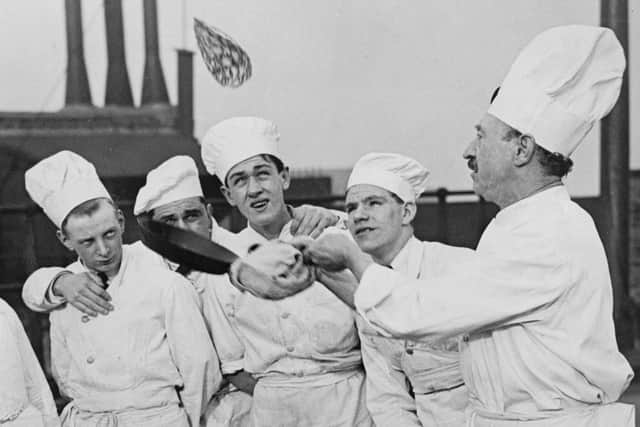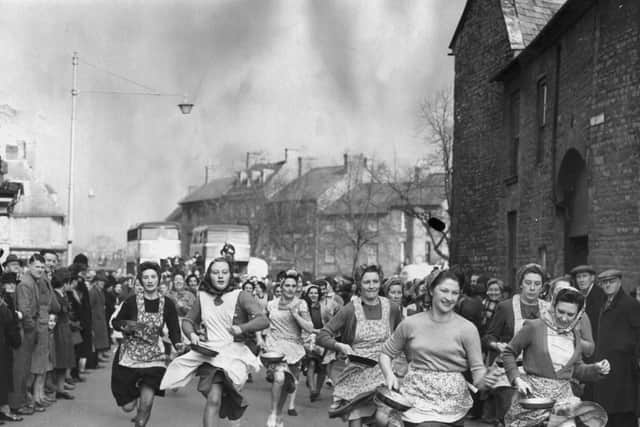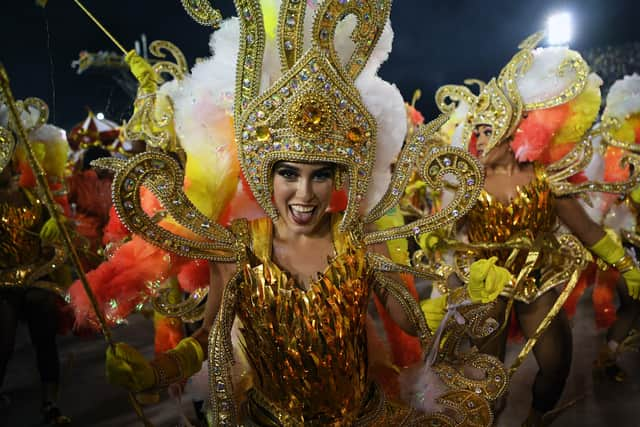What does shrove mean? ‘Shrove Tuesday’ meaning, where it originates, how to celebrate and why we eat pancakes
and live on Freeview channel 276
Shrove Tuesday is a Christian observance, where people prepare for Lent by eating pancakes and sweets and partaking in carnivals such as Mardi Gras.
The annual tradition of Shrove Tuesday falls on 21 February 2023, taking place one day before its more sombre counterpart, Ash Wednesday, and 47 days before Easter.
Advertisement
Hide AdAdvertisement
Hide AdShrove Tuesday is a Christian observance, but where did the tradition stem from, and what does the word ‘shrove’ mean?


What does ‘shrove’ mean?
The word ‘shrove’ has deeply religious roots, deriving from the word ‘shrive’.
‘Shrive’ means ‘absolve’, which is a traditional theological term for forgiveness, usually imparted by ordained Christian priests and experienced Christian penitents.
‘Shrove’ is the past tense of ‘shrive’, and can also mean to hear the confession of, assign penance to, and absolve. However, it also means to present oneself to a priest for confession, penance and absolution.


Advertisement
Hide AdAdvertisement
Hide AdShrove Tuesday marks the last day of the liturgical (meaning public worship) season of Shrovetide and the last chance to be "shrove" before Lent.
Shrovetide, also known as Pre-Lenten Season, is the three-day period to prepare for Lent. These days are used to make firm and ultimate decisions on personal Lenten sacrifices to mimic the sacrifices Jesus made when he entered the Judaean Desert for 40 days.
Shrovetide is the last chance for many Christians to dabble in their vices through loud and joyous festivals such as Carnival and Pancake Day before undertaking the more disciplined liturgical season of Lent.
Why do we eat pancakes on Shrove Tuesday?
Shrove Tuesday marks the last day of excess before Lent, so over time Shrove Tuesday has morphed into a festival of indulgence before the sacrifice.
Advertisement
Hide AdAdvertisement
Hide AdTraditionally, people cooked and ate pancakes to mark the beginning of Lent by using remaining rich ingredients such as flour, milk and eggs that wouldn’t be allowed to be eaten during the next 40 days, so they wouldn’t go off.
These ingredients formed pancakes and over time, this treat became synonymous with Shrove Tuesday, which is how Pancake Day got its name.
Is Pancake Day celebrated across the world?
Whilst Shrove Tuesday is an international festival, Pancake Day is mainly celebrated in the UK, Ireland and parts of the Commonwealth.
In Irish, the day is known as Máirt Inide, meaning the beginning of Lent.
Advertisement
Hide AdAdvertisement
Hide AdShrove Tuesday is also known as Mardi Gras (Fat Tuesday), Fastnachtsdienstag and simply as Carnival in Portuguese and Italian speaking countries.
In states across the US, Mardi Gras is a huge celebration where people adorned in masks and costumes indulge in rich, fatty food. The final day of Shrovetide is treated as a party to prepare for Lent.


The Rio Carnival is one of the biggest celebrations in the world marking this date, with the masquerade becoming synonymous with this event.
In Spain, the date is known as Dia de la tortilla (omelette day) as an omelette of sausage or pork fat is eaten.
Advertisement
Hide AdAdvertisement
Hide AdHawaiians note this date as Malasada Day, as malasadas (known as a Portuguese fried doughnut) are made to use up the stock of lard and sugar in the house.
People in Iceland call the day Sprengidagur (Bursting Day), by eating salted meat and peas.
Lithuanians, who call the day Užgavėnės, eat pancakes and doughnuts, whilst those in Finland (the day is called laskiainen) eat green pea soup.
People in Poland celebrate the Thursday before Ash Wednesday instead, where it is called tłusty czwartek or Fat Thursday, and is marked with music, traditional Polish food and celebrations.
Comment Guidelines
National World encourages reader discussion on our stories. User feedback, insights and back-and-forth exchanges add a rich layer of context to reporting. Please review our Community Guidelines before commenting.
